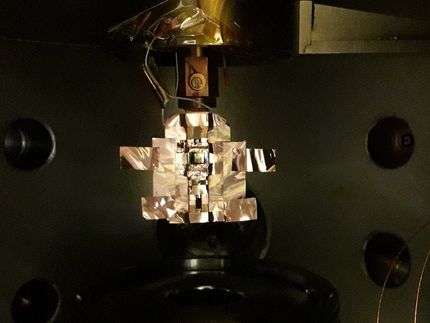Merck celebrates 125 years of liquid crystals
Both its pioneering spirit and unwavering dedication to application-oriented research and development have enabled Merck to contribute significantly to the triumphant success of liquid crystals. In September, the world technology and market leader will be marking the 125th anniversary of the discovery of liquid crystals at a scientific forum in Darmstadt, Germany hosted by the German Chemical Society (Gesellschaft Deutscher Chemiker - GDCh), as well as with its employees.
Exhibition at Merck on 125 years of liquid crystals
The 125-year anniversary of the discovery of liquid crystals will be marked in early September by a scientific symposium during the meeting of the German Chemical Society (GDCh), which will take place at the Darmstadtium congress center. There, Bernd Reckmann, Merck Executive Board member with responsibility for the Performance Materials and Merck Millipore divisions, will give lecture on how innovations lead to tailor-made customer solutions. One highlight will be Merck's historical exhibition during the GDCh meeting held in the foyer of the Darmstadtium. The exhibition will feature fascinating display items dating back to the discovery of liquid crystals; also on exhibit will be future-oriented developments that go beyond display applications - such as a smart window, in which liquid crystals are used to modify the light transmission properties of the glass.
The history of liquid crystals
The "seemingly living crystals" discovered in 1888 by Friedrich Reinitzer, Professor of Botany and Technical Microscopy, and Otto Lehmann, physicist and expert in physics and isomerism, while extracting substances from carrots were initially dismissed by the scientific community. Although liquid, but otherwise displaying properties only expected of solids, they defied the predominant scientific theories of the time. Yet by 1904 Merck had already begun selling liquid crystals for scientific studies in order to support their development. Nevertheless, it was not until the end of the 1960s that intensive research resumed on cholesteric and nematic liquid crystals for practical applications. In 1968, American electrical engineer George Heilmeier presented the first liquid crystal display, which due to a lack of suitable materials, only operated at temperatures of more than 80°C. In 1976, following the breakthrough discovery of cyanobiphenyls by George William Gray in the United Kingdom, Merck researchers developed even more stable liquid crystals with faster switching times and better optical properties. This marked the start of the rapid development of increasingly powerful display technologies, eventually leading to IPS (in-plane switching), FFS (fringe field switching), VA (Vertical Alignment), PS-VA (polymer stabilized vertical alignment), and blue phase.
Other news from the department business & finance

Get the chemical industry in your inbox
By submitting this form you agree that LUMITOS AG will send you the newsletter(s) selected above by email. Your data will not be passed on to third parties. Your data will be stored and processed in accordance with our data protection regulations. LUMITOS may contact you by email for the purpose of advertising or market and opinion surveys. You can revoke your consent at any time without giving reasons to LUMITOS AG, Ernst-Augustin-Str. 2, 12489 Berlin, Germany or by e-mail at revoke@lumitos.com with effect for the future. In addition, each email contains a link to unsubscribe from the corresponding newsletter.
























































